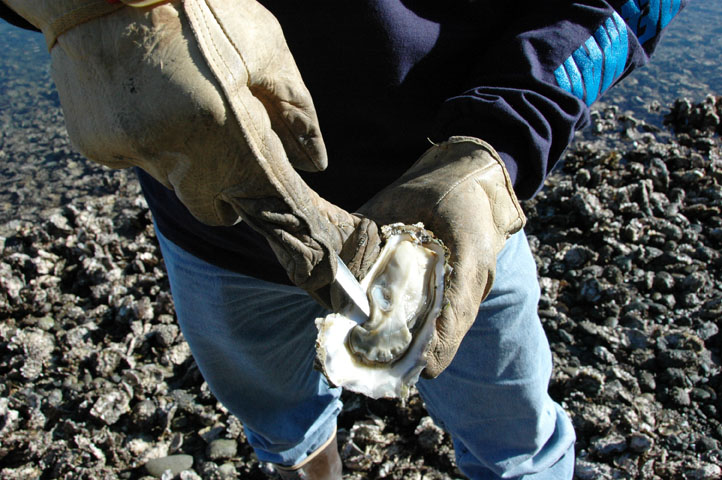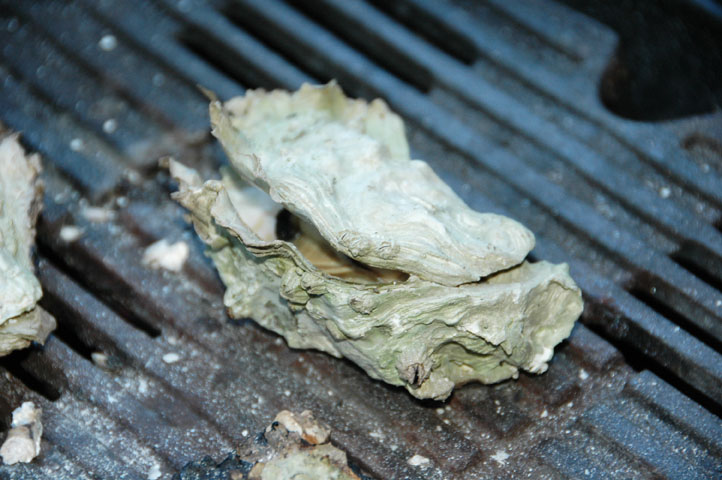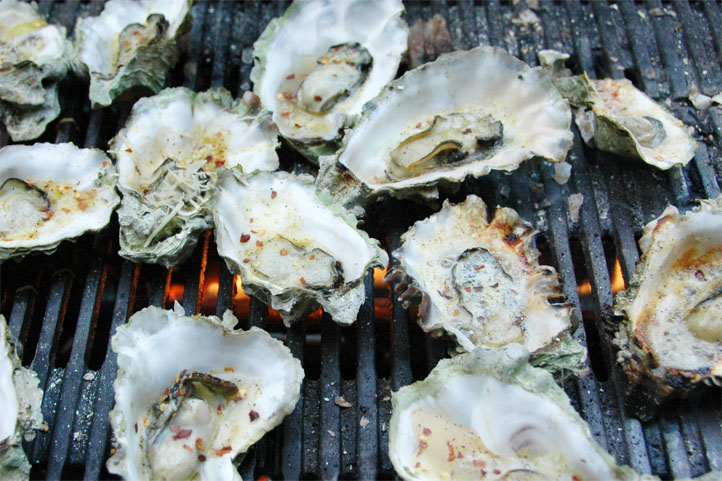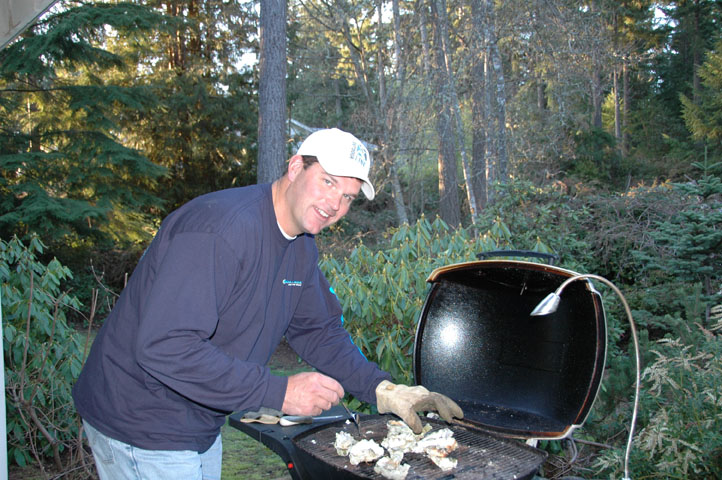Fresh Oysters, a Northwest Winter Treat Leave a reply
"You need to eat a couple of these honey…I've already eaten five of them," Nicole says several minutes after I gave her the green light to hit the bbq full of oysters we had just prepared on this sunny February afternoon. Sunny February afternoons are an oximoron here in Washington and we were definintely enjoying every last second of it with fresh oysters and Henry Weinhards on our back porch in Gig Harbor.
Growing up here in the Northwest, and particularly an Endsley, means that you eat plenty of oysters. We eat them raw, on an open campfire, in our omelettes, on sandwiches, baked, smoked, pan-fried, and in this case right off the barbecue. I'm pretty sure my uncle, who has a cabin near Seabeck on the Hood Canal, "is" a filter-feeding oyster and I can still remember my first "you-will-eat-your-oysters-or-you-don't-leave-the-table" show down with my grandfather at the dinner table at age 6. Grandpa was Popeye–I was 6–I ate the oysters!
Of the four oyster species that grow here in Washington only one of them is native to this area, the Olympia. If the Olympia wasn't so darned small (it's tiny) perhaps it could have defended itself from the Pacific, European, and Kumamoto oysters that have done very well here in the Pacific Northwest. You'll see the European's marketed as Wescott Bay oysters in restaurants and the Pacific is hard to miss in the Hood Canal, where it's thrived for over a century.
Since it's unlawful to remove oyster shells from the beach here in Washington the first thing you'll need to master is the art of shucking. Most tackle stores will carry oyster shucking knives and you can even find them in many of the hardware and grocery stores here in Western Washington.
A set of gloves or a towel is mandatory for shucking oysters. The shells have razor-sharp edges and the knife, as dull as it may seem, will easily puncture your hand if you don't wear gloves. Any leather work glove works great and welders gloves work excellent.
The point of the knife is placed at the rear of the oyster where the hinge is located. The hinge and a small muscle inside the oyster are what holds the shell together. Push the point of the knife into the hinge until it's seated solidly and then push and twist slightly to pop the hinge open, being careful not to drive the knife down into the oystery goodness contained in the shell.

Next run the edge of the oyster knife along the upper shell to cut the top of the muscle that holds the shell together.

Once the upper shell is removed run the oyster knife edge along the lower part of the shell to cut the bottom portion of the muscle, seen in this photo on the left side of the oyster.

Once the oyster is free from the shell place it in a Tupperware container or Zip Vac bag and leave the shell on the beach. As I mentioned above, it's unlawful to remove oyster shells from the beach here in Washington, as the shells contain the oyster seedlings needed to re-seed the beaches.
A much easier way to access the goodness contained within the oyster shell is to cook them on the barbecue until they pop open. Whole fresh oysters can be purchased at Pike Place Market or any of the number of shellfish farms located here for between $7 and $10 a dozen. You'll still have to do some minor shucking, but once they're popped open this process is much easier.
An oyster that's "popped" and is ready to have it's upper shell removed.

Papa Endsley worked up this to-die-for recipe for cooking oysters on the barbecue quite a few years ago and it's been a big hit ever since. After placing a small amount of Tillamook butter in the now-opened oyster shell sprinkle on some Carolina seasoning, red pepper flakes, and parmesan cheese. Olive oil also works great in lieu of the butter for a more healthy version of this treat and Johnny's seasoning is also a good'n for this one!

The lower half of the Pacific oysters shell is the perfect baking dish!

The oysters don't make it far from the grill…feed'n time at the Endsley household. Grab a fork and dig in!

Fresh oysters are available at Pike Place Market in Seattle and just about any other fresh seafood market carries them here in Washington. Or, if you want to hit the beach and try shucking some yourself check out the Washington Department of Fish and Wildlife regulations pamphlet for more information on limits, tides, and health advisories.

